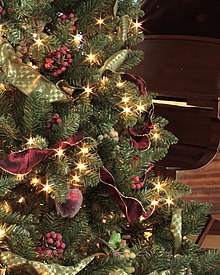
A Christmas tree is a decorated tree, usually an evergreen conifer, such as a spruce, pine or fir, or an artificial tree of similar appearance, associated with the celebration of Christmas.

The UL enterprise is a global private safety company headquartered in Northbrook, Illinois, composed of three organizations, UL Research Institutes, UL Standards & Engagement and UL Solutions.
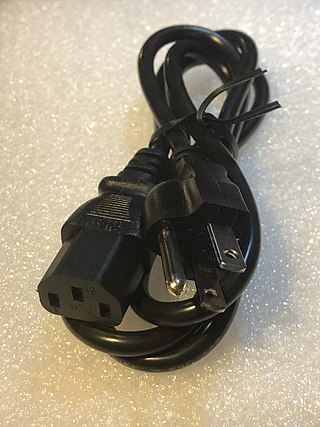
A power cord, line cord, or mains cable is an electrical cable that temporarily connects an appliance to the mains electricity supply via a wall socket or extension cord. The terms are generally used for cables using a power plug to connect to a single-phase alternating current power source at the local line voltage. The terms power cable, mains lead, flex or kettle lead are also used. A lamp cord is a light-weight, ungrounded, single-insulated two-wire cord used for small loads such as a table or floor lamp.

Christmas lights are lights often used for decoration in celebration of Christmas, often on display throughout the Christmas season including Advent and Christmastide. The custom goes back to when Christmas trees were decorated with candles, which symbolized Christ being the light of the world. The Christmas trees were brought by Christians into their homes in early modern Germany.

A product recall is a request from a manufacturer to return a product after the discovery of safety issues or product defects that might endanger the consumer or put the maker or seller at risk of legal action. Product recalls are one of a number of corrective actions that can be taken for products that are deemed to be unsafe.
NOMA was a company best known for making Christmas lights. It was once the largest manufacturer of holiday lighting in the world. As of 2021, the rights to the brand in Canada and the United States are owned by Canadian Tire, which sells NOMA-branded products through its namesake stores in Canada, and through an e-commerce website in the United States.

A nightlight is a small light fixture, usually electrical, placed for comfort or convenience in dark areas or areas that may become dark at certain times, such as at night or during an emergency. Small long-burning candles serving a similar function are referred to as "tealights".
Frigidaire Appliance Company is the American consumer and commercial home appliances brand subsidiary of multinational company Electrolux, a Swedish multinational home appliance manufacturer, headquartered in Stockholm.
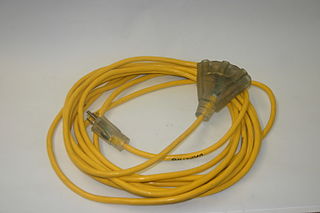
An extension cord (US), extension cable, power extender, drop cord, or extension lead (UK) is a length of flexible electrical power cable (flex) with a plug on one end and one or more sockets on the other end. The term usually refers to mains extensions but is also used to refer to extensions for other types of cabling. If the plug and power outlet are of different types, the term "adapter cord" may be used. Most extension cords range from around 2 to 30 feet in length although they are made up to 300 feet (91.44 m) in length.

Aluminum building wiring is a type of electrical wiring for residential construction or houses that uses aluminum electrical conductors. Aluminum provides a better conductivity-to-weight ratio than copper, and therefore is also used for wiring power grids, including overhead power transmission lines and local power distribution lines, as well as for power wiring of some airplanes. Utility companies have used aluminum wire for electrical transmission in power grids since around the late 1800s to the early 1900s. It has cost and weight advantages over copper wires. Aluminum in power transmission and distribution applications is still the preferred wire material today.

Luminaria is a term used in different parts of the world to describe various types of holiday lights, usually displayed during Christmas. In English, the term most commonly refers to a specific type of simple paper lantern made by placing a votive candle in some sand inside a paper bag. Also known as a farolito, it is a traditional Christmas decoration in the Southwestern United States, particularly New Mexico, where it is a cultural hallmark of the Pueblos and Hispanos of New Mexico and a part of the state's distinct heritage. Luminarias are usually placed in rows along walls, roofs, and walkways to form a holiday display, especially on Christmas Eve.
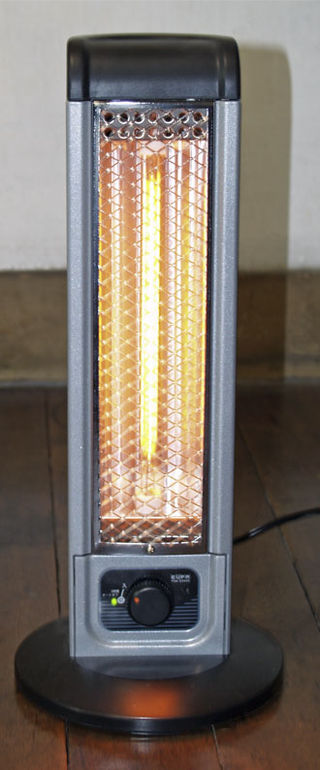
A space heater is a device used to heat a single, small- to medium-sized area. This type of heater can be contrasted with central heating, which distributes heat to multiple areas.

Toy safety is the practice of ensuring that toys, especially those made for children, are safe, usually through the application of set safety standards. In many countries, commercial toys must be able to pass safety tests in order to be sold. In the U.S., some toys must meet national standards, while other toys may not have to meet a defined safety standard. In countries where standards exist, they exist in order to prevent accidents, but there have still been some high-profile product recalls after such problems have occurred. The danger is often not due to faulty design; usage and chance both play a role in injury and death incidents as well.

The Electrical Safety Foundation International (ESFI) is a 501(c)(3) non-profit organization based in Rosslyn, Virginia, US dedicated exclusively to promoting electrical safety at home, school, and in the workplace. Founded in 1994 as a cooperative effort by the National Electrical Manufacturers Association (NEMA), Underwriters Laboratories (UL), and the US Consumer Product Safety Commission (CPSC), ESFI is funded by charitable contributions from, distributors, Nationally Recognized Testing Laboratories, retailers, insurers, utilities, safety organizations, and trade and labor associations. The mission of ESFI is to prevent electrically-related injuries, deaths, and fires through public education and outreach.
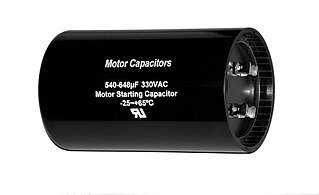
A motor capacitor is an electrical capacitor that alters the current to one or more windings of a single-phase alternating-current induction motor to create a rotating magnetic field. There are two common types of motor capacitors, start capacitor and run capacitor.
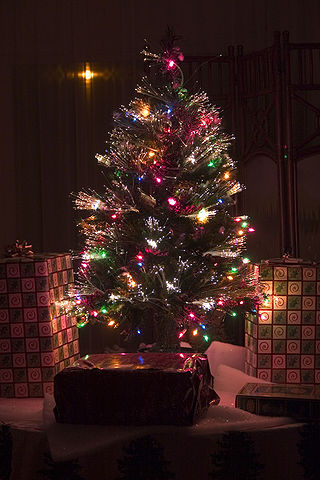
An artificial or fake Christmas tree is an artificial pine or fir tree manufactured for the specific purpose of use as a Christmas tree. The earliest artificial Christmas trees were wooden, tree-shaped pyramids or feather trees, both developed by Germans. Most modern trees are made of polyvinyl chloride (PVC) but many other types of trees have been and are available, including aluminum Christmas trees and fiber-optic illuminated Christmas trees.

During 1999 and 2000, Burger King and the Consumer Product Safety Commission held an effort to recall plastic containers resembling Poké Balls in the United States after it was determined they presented a suffocation hazard.

Stab-Lok is a brand name of electrical circuit breakers that were manufactured primarily by Federal Pacific Electric from 1950 to 1980. In June 1980, Reliance Electric, which had purchased FPE, reported to the United States Consumer Product Safety Commission that "many FPE circuit breakers did not fully comply with Underwriters Laboratories, Inc. (UL) requirements. Commission testing confirmed that these breakers fail certain UL calibration test requirements." In 2018 it was reported that Stab-Lok breakers and panels, made by FPE and other companies, were still in use, and it was recommended that they be removed as a potential fire hazard.
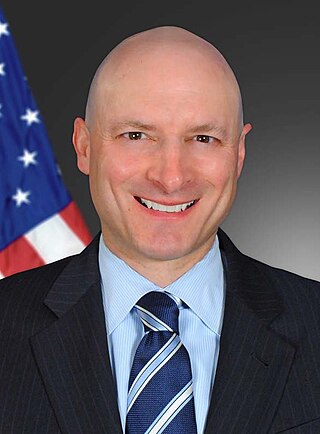
Elliot F. Kaye is a former chairman of the U.S. Consumer Product Safety Commission. He served as a commissioner of the agency from 2014 through 2021, and was chairman from 2014 to 2017 under the Obama administration, directing the U.S. government's oversight and recall of everyday products that can cause injury or death.
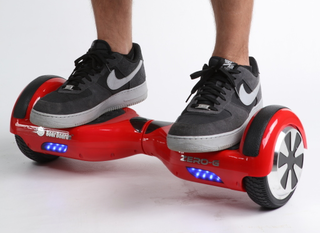
A self-balancing scooter is a self-balancing personal transporter consisting of two motorized wheels connected to a pair of articulated pads on which the rider places their feet. The rider controls the speed by leaning forward or backward, and direction of travel by twisting the pads.
